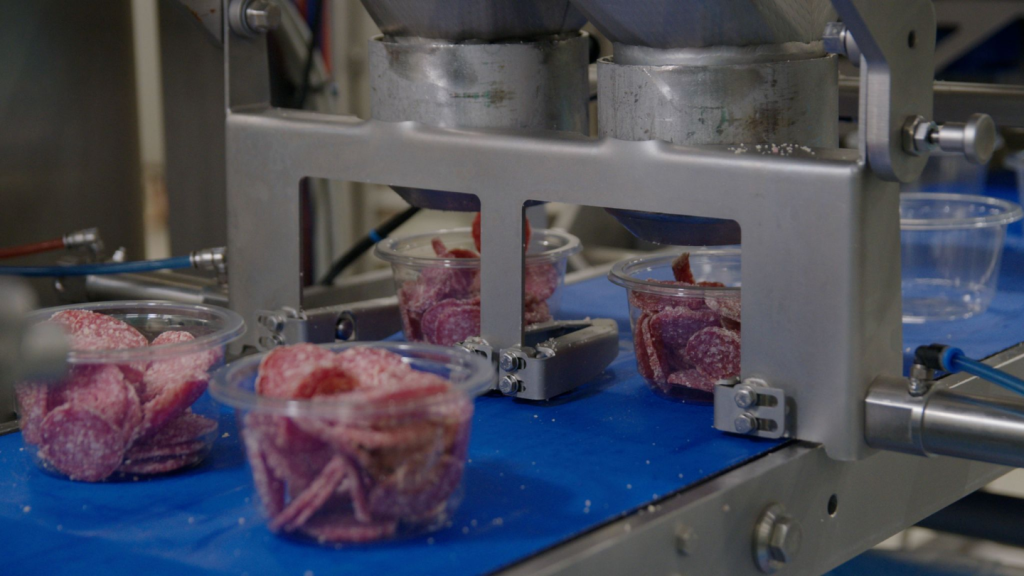Irradiation to kill bacteria, once hailed as a potential answer to many of the food scares of the 1990s, has faded from public attention to the point where its opponents have stopped campaigning. Yet scientists remain convinced of the benefits. Chris Lyddon reports.
Earlier this year the Institute of Food Science and Technology, an independent professional body for food scientists and technologists, updated its policy statement on irradiation. “Irradiation, carried out under conditions of Good Manufacturing Practice, is commended as an effective, widely applicable food processing method judged to be safe on extensive available evidence, that can reduce the risk of food poisoning, control food spoilage and extend the shelf-life of foods without detriment to health and with minimal effect on nutritional or sensory quality,” it said, quoting endorsement of its view by the World Health Organisation, the Food and Agricultural Organisation and Codex Alimentarius.
Even so it recognised the opposition to irradiation in many countries. “Food irradiation is slowly gaining consumer acceptance in the US and several other countries but it is slow to gain support within many parts of Europe, including the UK, where the Food Standards Agency recommends no extension of application,” it said. “Many consumers are initially hostile to irradiation but when the process is explained to them they become generally more in favour.”
Despite this endorsement, irradiation of food has not become widespread. In the UK, for example, only one licence has been granted, for herbs and spices, even though the Food Standards Agency accepts that it is safe and effective and national regulations allow for the irradiation of fruit, vegetables, cereals, bulbs and tubers, spices and condiments, fish and shellfish and poultry.
The Food Commission, a UK-based campaigning group which opposes irradiation, has put the issue to one side. “Our campaign is not active at the moment,” a spokesman said when called by just-food. “The issue has quietened down.” He recommended irradiation.info, the website of the European Food Irradiation Campaign. A call to that got ‘number not recognised’. An email bounced.
How well do you really know your competitors?
Access the most comprehensive Company Profiles on the market, powered by GlobalData. Save hours of research. Gain competitive edge.

Thank you!
Your download email will arrive shortly
Not ready to buy yet? Download a free sample
We are confident about the unique quality of our Company Profiles. However, we want you to make the most beneficial decision for your business, so we offer a free sample that you can download by submitting the below form
By GlobalDataBut the experts still say it is safe. “My personal belief is if it is done in a controlled and regulated way it’s a perfect way of ensuring the safety of food products,” Dr David Richardson, a specialist consultant in food science and nutrition to the food industry, told just-food. “It’s a very good way of ensuring microbiological security and getting rid of the bugs in food components.”
“The problem we have in Europe, especially in the UK, is consumer perception,” he said. “People think the food is going to be zapped by some kind of nuclear power plant.”
“The supermarkets follow consumers and their attitudes, rather than the actual technical benefits,” he said. “The key is to make sure, like any other thing, that it has a regulatory framework.”
He identified some inconsistency in the regulation on irradiation. “One area in which it is allowed is in medicinal foods for hospitals,” he said. “It’s okay for the people in hospital but not the general population.”
“You get far better preservation with irradiation than you do with other preservation techniques,” he said. “It’s like when cans were first used in the 19th century. Any new technology gets a thumbs down at first.”
Professor Verner Wheelock, chairman of food training organisation Verner Wheelock Associates and former special professor in food science at the University of Nottingham, told just-food he had started to keep a watching brief on irradiation three or four years ago. “There were signs it was taking off in the States,” he said. But the signs never came to anything more concrete. “A combination of irrational forces were tending to overplay their hand,” he added. “It just hasn’t happened in America.” If the technologically minded US have not adopted irradiation he does not expect it to become widely used in Europe. “They won’t be able to make it work here,” he said.
He pointed out that it is hard to show whether food has been irradiated. “You’ve only got to draw a parallel with what you do when you digest food,” he says. “The chemical changes for example in milk when you digest it are far more complex than anybody has been able to determine. Yet with irradiation the actual chemical changes you get are almost non-existent.”
Professor Wheelock suggested a few reasons why irradiation has failed. “The media tend to hype things up,” he says. “You’ve got a whole industry that has to justify its existence.” Scientists have to take some of the blame too. “With the pressure on funding, if you can hype something up it is a way of getting the government to give you more money to do your research.”
Professor Wheelock is convinced there could still be a future for irradiation. “I’m sure it still does have tremendous potential,” he says. “Most of the arguments against it are quite specious.”
Douglas Pattie of the Fresh Produce Consortium does not hold out much hope for irradiation, he told just-food. “In the short term it’s not going to happen,” he says. “In the long term it’s not likely given the consumer reaction.”







